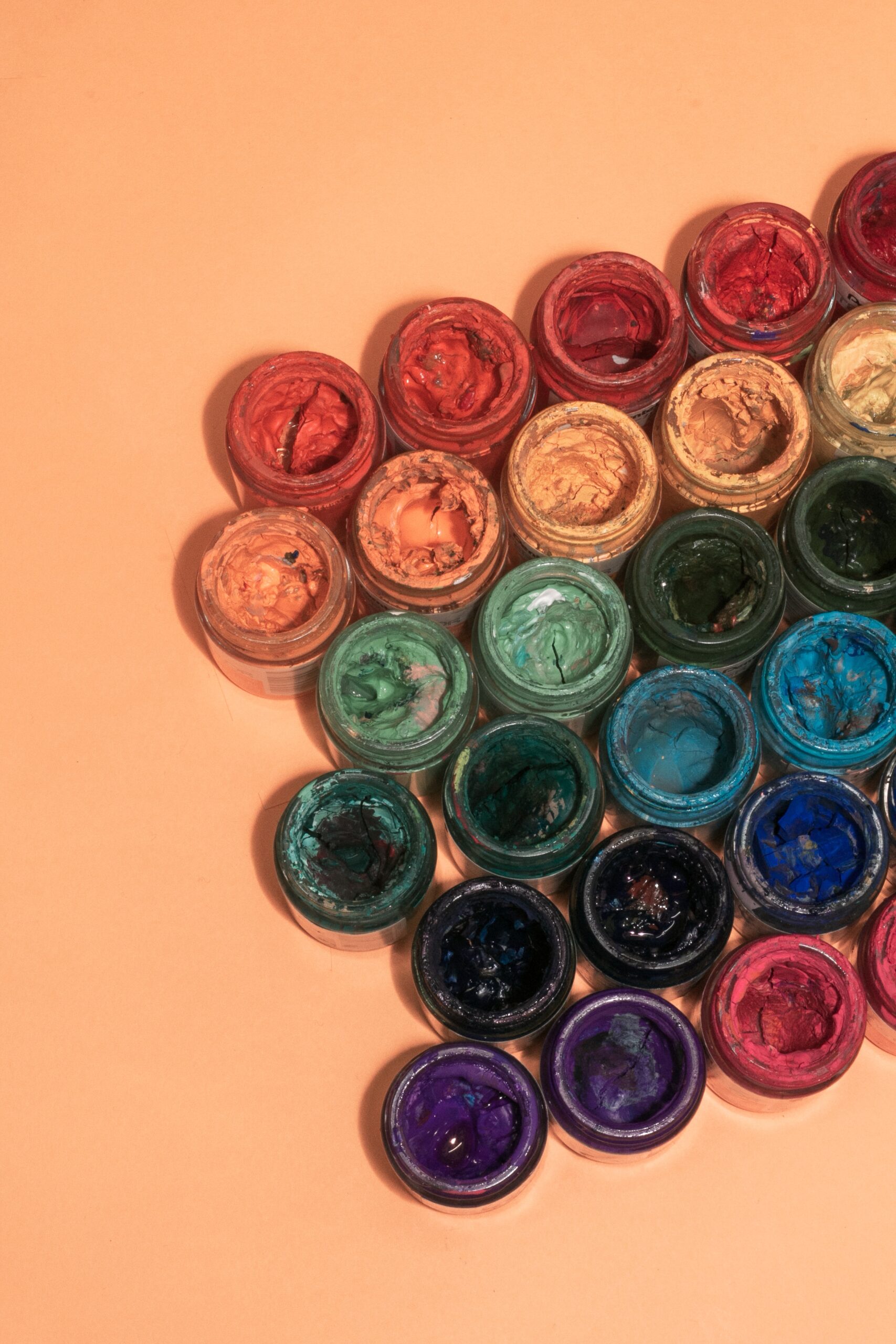If you’ve ever accidentally spilled acrylic paint on your laminate floor, you know firsthand how challenging it can be to remove. Trying to scrape or scrub it off might seem tempting, but it could end up damaging the surface. However, fear not! There are simple and effective methods to safely get rid of acrylic paint from your laminate flooring without causing any harm. In this article, you will discover step-by-step instructions on how to successfully remove acrylic paint from your laminate floor, allowing you to restore its pristine condition with ease and confidence.

This image is property of images.unsplash.com.
Preparation
Before you start removing the acrylic paint from your laminate floor, it is important to gather the necessary supplies. You will need some clean cloths or paper towels, a bucket of warm soapy water, isopropyl alcohol, a scraper or putty knife, a warm water and vinegar solution, a commercial adhesive remover, a heat gun or hairdryer, rubbing alcohol or nail polish remover, WD-40 or cooking oil, magic erasers, and a steam cleaner.
Next, clear the area around the paint spill. Remove any furniture or objects that may obstruct your access to the affected area. This will ensure that you have enough space to work and avoid any accidental damage to your belongings.
Before you begin the paint removal process, it is crucial to protect yourself. Wear gloves to shield your hands from any harsh chemicals or abrasive materials that you may use during the process. Additionally, consider wearing eye protection to prevent any splashes or debris from getting into your eyes.
Removing Wet Acrylic Paint
If the acrylic paint is still wet, the removal process will be relatively easier. Start by blotting the paint with a clean cloth or paper towel. This will help to absorb as much paint as possible before it dries and sets into the floor. Be gentle during this process to avoid spreading the paint further.
Once you have blotted the paint, use a bucket of warm soapy water to clean the affected area. Dip a cloth or sponge into the soapy water and gently scrub the paint stains. The warm water will help to loosen the paint, while the soap will assist in breaking down the paint particles.
If the paint stains persist, you can try applying isopropyl alcohol to the area. Moisten a cloth or sponge with isopropyl alcohol and gently rub the paint stains. The alcohol will act as a solvent and help to dissolve the paint, making it easier to remove.
Removing Dry Acrylic Paint
Removing dry acrylic paint from laminate flooring can be more challenging, but with the right techniques, it is still possible. Start by gently scraping the paint with a scraper or putty knife. Be careful not to scratch or damage the laminate surface. Scrape in the direction of the grain to minimize any visible marks or scratches.
After scraping, create a warm water and vinegar solution by mixing equal parts of warm water and white vinegar. Moisten a clean cloth with the solution and blot the paint stains. The acidic nature of vinegar helps to soften and dissolve dry paint, facilitating its removal.
If the paint stains are stubborn and refuse to come off, you can try using a commercial adhesive remover. Follow the instructions on the product label and apply the adhesive remover directly to the paint stains. Allow it to sit for a few minutes to dissolve the paint, and then gently scrub the stains using a clean cloth or sponge.
If all else fails, you can use a heat gun or hairdryer to soften the paint. Hold the heat gun or hairdryer a few inches away from the paint stains and apply heat to the area. The heat will soften the paint, making it easier to scrape off with a scraper or putty knife. Be cautious not to hold the heat source too close or for too long to avoid damaging the laminate floor.
Additional Techniques
In addition to the primary methods mentioned above, there are a few additional techniques you can try to remove acrylic paint from laminate floors.
Rubbing alcohol or nail polish remover can be effective in breaking down paint stains. Apply a small amount of rubbing alcohol or nail polish remover onto a cloth or cotton ball and gently dab it onto the paint stains. Gradually rub the area until the paint lifts off.
WD-40 or cooking oil can also be used to remove stubborn paint stains. Apply a small amount of WD-40 or cooking oil onto a cloth and gently rub the paint stains. The oils will help to break down the paint, making it easier to remove.
Magic erasers can be handy for removing small paint stains or scuffs on laminate floors. Moisten a magic eraser with water and gently rub the paint stains or scuffs until they disappear. Be cautious not to apply too much pressure or scrub too vigorously, as this may damage the laminate surface.
If you have a steam cleaner, you can use it to remove paint stains from laminate floors. Fill the steam cleaner with water and follow the manufacturer’s instructions to generate steam. Hold the steam cleaner wand over the paint stains and slowly move it back and forth. The heat and steam will help to soften the paint, making it easier to wipe away.

This image is property of images.unsplash.com.
Test and Proceed with Caution
Before using any of the aforementioned techniques on your laminate floor, it is important to test them on a small inconspicuous area first. This will allow you to assess their effectiveness and ensure that they do not cause any damage or discoloration to your floor.
When using abrasive materials, such as scrapers or magic erasers, it is important to proceed with caution. Apply gentle pressure and avoid excessive force to prevent any scratches or damage to the laminate surface.
Additionally, excessive moisture can be harmful to laminate flooring. Avoid using excessive amounts of water or liquids during the paint removal process, as prolonged exposure to moisture can cause the laminate to warp or bubble. Use a damp cloth or sponge instead of soaking the floor with water.
Cleaning and Finishing
After successfully removing the acrylic paint from your laminate floor, it is important to thoroughly clean the area. Wipe the floor with a damp cloth or sponge to remove any residue or cleaning products. Ensure that you rinse the cloth or sponge frequently to prevent smearing the paint residues onto other areas of the floor.
Once the area is clean, dry the floor thoroughly to avoid any moisture-related issues. Use a clean, dry cloth or towel to absorb any excess moisture. If necessary, you can use a fan or open windows to help speed up the drying process.
Consider using a laminate floor cleaner to restore the floor’s shine and remove any remaining traces of paint or cleaning products. Follow the instructions on the cleaner’s label and apply it to the floor as directed. Use a clean cloth or mop to evenly distribute the cleaner and gently wipe the floor. Avoid using excessive amounts of cleaner, as this can leave a residue on the floor.
Finally, inspect the floor for any residue or paint marks. If there are still visible stains or marks, repeat the appropriate removal technique until the floor is clean and free of paint.

This image is property of images.unsplash.com.
Preventing Future Accidents
To prevent future accidents and paint spills on your laminate floor, there are a few preventative measures you can take.
Cover the floor with a drop cloth or plastic sheeting when engaging in painting projects. This will help to catch any paint drips or spills and protect your laminate floor from damage.
If you anticipate a higher risk of paint spills in a specific area, consider placing a protective barrier, such as a plastic mat or rug, to prevent direct contact between the paint and the laminate surface. This will provide an extra layer of protection and make cleanup easier in case of spills.
Lastly, it is essential to clean spills immediately. Promptly wiping up any paint spills or splatters can prevent them from drying and setting into the floor. Use a damp cloth or sponge to blot the area and remove the paint before it has a chance to adhere to the surface.
Seek Professional Help
If you are unsure about removing acrylic paint from your laminate floor or if the paint stains are particularly stubborn or extensive, it may be best to seek professional help. Contact a professional floor cleaner who has experience in dealing with laminate flooring and paint removal. They will have the knowledge and expertise to assess the situation and apply the appropriate cleaning techniques without causing any damage.
Alternatively, you can consult with a laminate flooring expert who can provide guidance and advice tailored to your specific situation. They can assess the type of laminate flooring you have and recommend the best course of action for paint removal and floor maintenance.

Conclusion
Removing acrylic paint from laminate floors is possible with the right techniques and precautions. Whether the paint is wet or dry, there are several methods you can employ to effectively remove the paint stains. It is important to consider the specific circumstances of the paint spill and choose the most appropriate method.
Remember to always test any technique on a small inconspicuous area before proceeding with the entire floor. Be cautious when using abrasive materials and avoid excessive moisture to prevent any damage to your laminate floor. Once the paint is removed, clean and dry the area thoroughly, and consider using a laminate floor cleaner for a polished finish.
By following the correct technique for your situation and maintaining proper care, you can successfully remove acrylic paint from your laminate floor and prevent future accidents.



